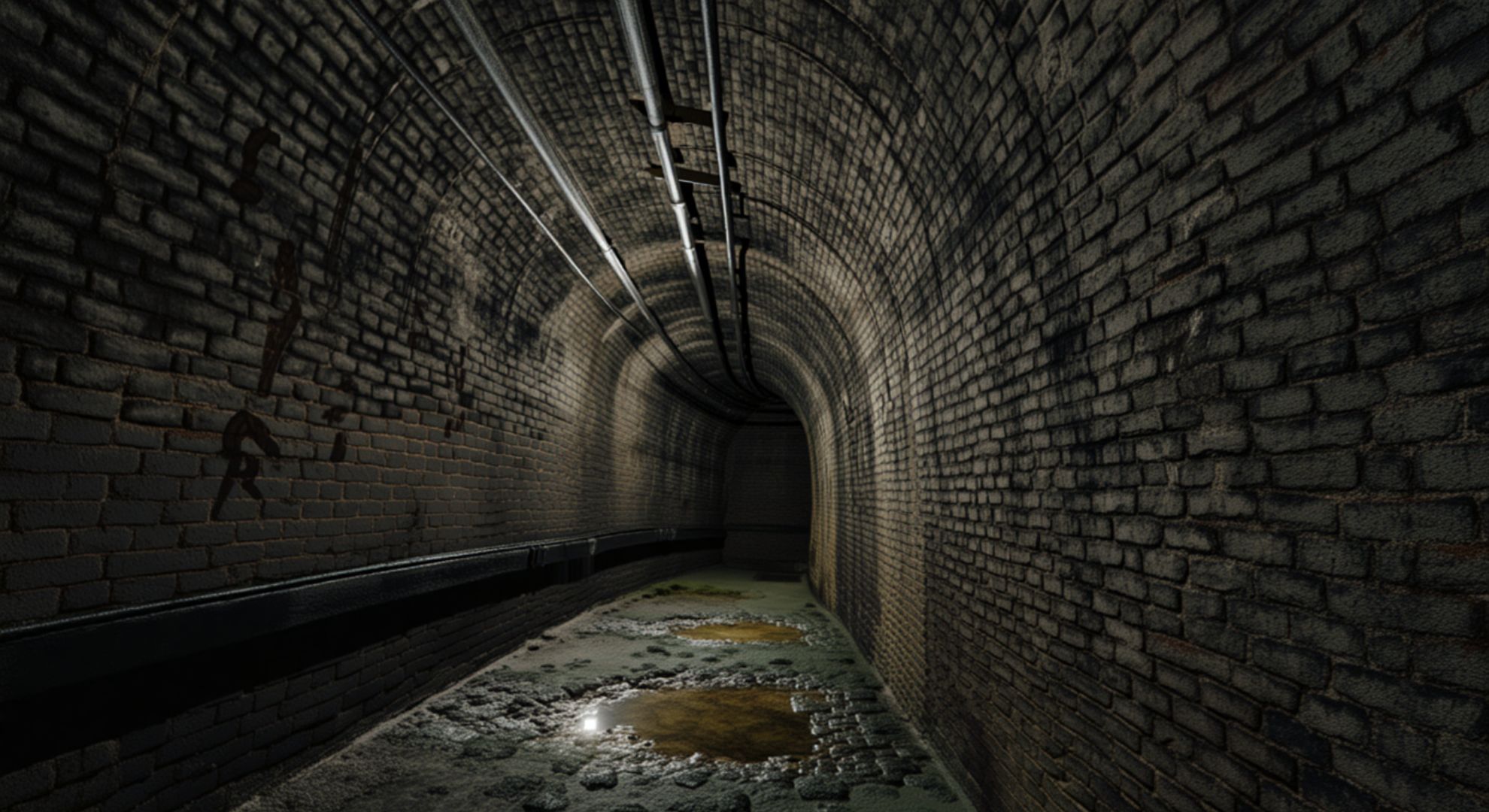Commuters paused, cameras lifted, as workers pried open a rusted hatch near the rail yards. Beneath the city’s basalt and brick lies a passage that has slept through four decades of silence. What began as routine maintenance became a spark for civic imagination.
A city built on layers
Dunedin’s streets sit atop a quilt of history. Gold-rush wealth, Victorian engineering, and maritime trade stitched the town together. Hidden spaces—culverts, cellars, and cuttings—still whisper through vents and drains.
Urban archaeologists call them the city’s “second memory,” a shadow archive of ambition. When one of those threads is tugged, the past pulls back with quiet insistence.
The rediscovery
The opening revealed a brick-lined tunnel arcing like a burnt sunset under the gravel. Air rolled out cool and mineral, edged with iron and faint salt. A worker tapped the wall and said, “Feels sound, but it’s been a long time.”
Records hint at late-19th-century works, possibly a service corridor for drainage or cable runs. In the early 1980s, heavy rain and shifting foundations led to a quick seal and a long forget. Since then, weeds stood guard like quiet sentries at a doorway.
What lies inside
Laser scans show a gentle curve stretching roughly a hundred and fifty meters. Rusted fixings cling to the mortar, and a collapsed access niche forms a throat of silt. No ornate tiling, no lost murals—just honest workmanship and soot-kissed brick that never complained.
“People expect treasure,” said a local historian, “but the treasure is the craft itself—the patience of hands you’ll never meet.” In a bright age of glass and steel, the modest arch feels stubbornly human.
Why it matters now
Cities everywhere are mining their basements for climate resilience and identity. Old voids become storm buffers, pedestrian links, or storytelling spaces. Dunedin, with its steep grades and tidal moods, sees practical and poetic reasons to look down as well as up.
The tunnel offers three tempting paths: stabilize and study, adapt and open, or document and re-seal. Each option trades romance for risk, and memory for money.
Options on the table
Preliminary figures are indicative, not final, and community input remains central.
| Option | Estimated Cost (NZD) | Key Benefits | Primary Risks | Likely Timeline |
|---|---|---|---|---|
| Structural stabilization & study | 0.8–1.5M | Protects fabric; enables research | Hidden defects; cost creep | 6–12 months |
| Adaptive reuse (guided access) | 2–4M | Heritage tourism; educational value | Safety; ongoing maintenance | 12–24 months |
| Stormwater integration | 3–6M | Flood mitigation; dual purpose | Engineering complexity | 18–36 months |
| Document & re-seal | 0.2–0.4M | Lowest cost; preserves status quo | Lost public access | 1–3 months |
Voices from the city
“I walked past this block for years, never knowing a tunnel breathed under my feet,” said Aroha, a nearby café owner. “It’s weirdly comforting—like the city’s got extra roots.”
A council spokesperson struck a careful note: “Safety comes first, but we’re excited by the heritage potential if the structure proves sound.”
An engineer, helmet tucked under her arm, added: “The brickwork reads steady, though we’ll probe every joint. Old tunnels don’t tolerate assumptions.”
The pull of the unseen
There’s a special gravity to underground places—a hush that edits time. You hear water count its own seconds, and your breath comes back in doubles. The city above feels like a theater, the city below like its script.
“Rooms remember everything,” wrote a poet, and tunnels remember the city in motion: cables humming, boots passing, rain threading seams into rivers.
A careful choreography
Next steps mix science with sensitivity. Ground-penetrating radar, endoscopic cameras, and gentle shoring will map the truth from arch to invert. Heritage advisors will decide what to keep visible, what to shield, and how to tell the story without erasing the scar.
Designers sketch low-light pathways, damp sensors, and interpretive panels that let the structure speak in its own accent. The best interventions are reversible, polite to the past.
What to watch in the months ahead
- Structural assessment findings, public consultations, and how budgets balance safety with civic curiosity.
Whether the passage becomes a classroom of brick or returns to dignified sleep, it has already done something useful: it pulled attention beneath the pavement. It reminded a coastal city that its strength is not just in bold facades, but in quiet arches that hold, breathe, and wait for us to listen.
